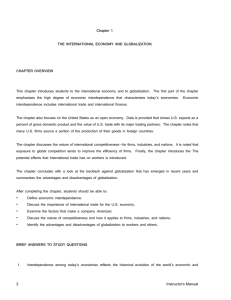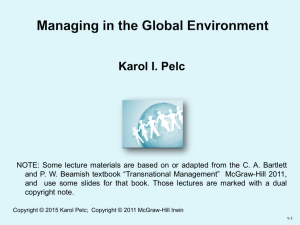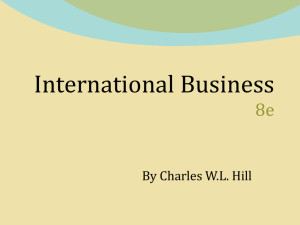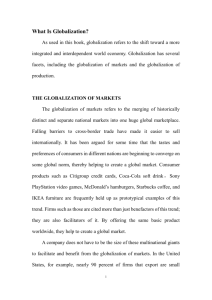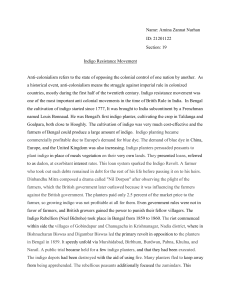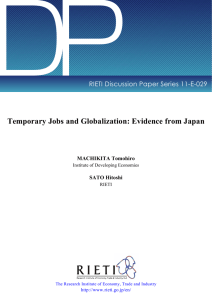TEL AVIV UNIVERSITY - Faculty of Management
advertisement
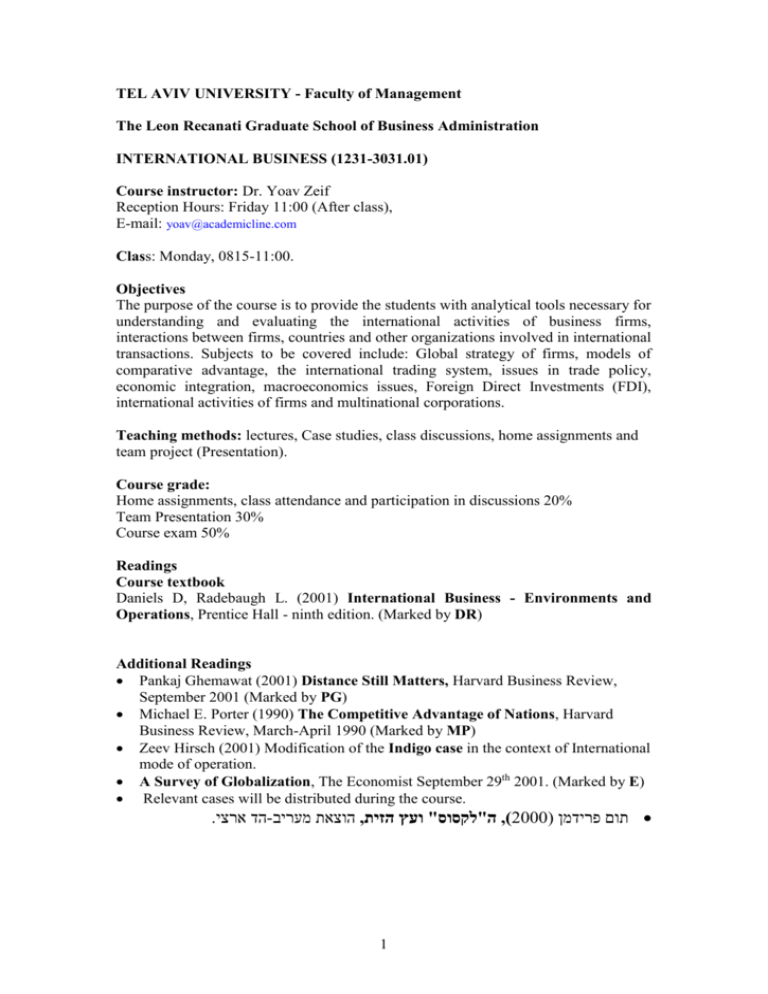
TEL AVIV UNIVERSITY - Faculty of Management The Leon Recanati Graduate School of Business Administration INTERNATIONAL BUSINESS (1231-3031.01) Course instructor: Dr. Yoav Zeif Reception Hours: Friday 11:00 (After class), E-mail: yoav@academicline.com Class: Monday, 0815-11:00. Objectives The purpose of the course is to provide the students with analytical tools necessary for understanding and evaluating the international activities of business firms, interactions between firms, countries and other organizations involved in international transactions. Subjects to be covered include: Global strategy of firms, models of comparative advantage, the international trading system, issues in trade policy, economic integration, macroeconomics issues, Foreign Direct Investments (FDI), international activities of firms and multinational corporations. Teaching methods: lectures, Case studies, class discussions, home assignments and team project (Presentation). Course grade: Home assignments, class attendance and participation in discussions 20% Team Presentation 30% Course exam 50% Readings Course textbook Daniels D, Radebaugh L. (2001) International Business - Environments and Operations, Prentice Hall - ninth edition. (Marked by DR) Additional Readings Pankaj Ghemawat (2001) Distance Still Matters, Harvard Business Review, September 2001 (Marked by PG) Michael E. Porter (1990) The Competitive Advantage of Nations, Harvard Business Review, March-April 1990 (Marked by MP) Zeev Hirsch (2001) Modification of the Indigo case in the context of International mode of operation. A Survey of Globalization, The Economist September 29th 2001. (Marked by E) Relevant cases will be distributed during the course. .הד ארצי- הוצאת מעריב, ה"לקסוס" ועץ הזית,)2000( תום פרידמן 1 Course Outline Class 1: - - Class 2: - Class 3: - - Class 4: - - Introduction to International Business and trends in the global economy. o Globalization and Business. o The International Business framework. o Motivations and paths of International Business. Introduction to Global Strategy. DR, Ch. 1 The Economic Environment Economic Indicators Introduction to International Trade Theory Supply side models of trade: o The Ricardian Model o The Heckscher-Ohlin mode DR Ch.4, p.115-121. Ch. 5 Supply side models of trade (continue): o The Specific Factors Model The demand side of Trade Theories: o The Product’s life Cycle Theory o The Linder model New Trade Theories (Internal and external economics of scale) o Ecosystems and clusters o The case of the Silicon Valley DR Ch. 5 ,6 Submitting Project Proposals The Porter “Diamond”- Integrative approach toward trade. Government intervention in trade o Economic Rational for Government intervention o Noneconomic Rational for Government intervention o The Political Economy of trade o Strategic Trade Policy (The Boeing-Airbus case) The world trading system and the WTO DR Ch. 5, Ch. 6 MP Assignment 1 2 Class 5: - - Class 6: - - Economic Integration The different aspects of Globalization: o Identifying the winners and losers of the globalization process. o Tax issues in the new economy. Foreign Direct Investment (FDI) The Multi-National Corporate (MNC) in an FDI context (The case of Ireland) The hierarchic model of International expansion. A survey of globalization (E) ה"לקסוס" ועץ הזיתCh. 1,12 DR Ch.8, Ch.11 p.373-388 Choosing an International competitive strategy o Choosing where to operate (country selection) o Evaluating Expansion Strategies (CPA vs. CAGE, Concentration vs. Diversification) o Forms of operations o Supply chain management (Dell, starbucks) o International Marketing The Indigo mini-case: Evaluating the expansion strategy of indigo vs. the strategy of its rivalry (Xeikon) PG DR Ch. 16,18, 13,17 The Indigo case Assignment 2 Class 7: Presentations of Team’s project Team Project At the end of the course, students need to submit and present a project paper. Groups of six students prepare a Power Point presentation, 15 minutes, analysing a leading MNC along the themes dealt with in this course. The agenda of the presentation could look as follows: 1. Introduction (of the company and of the paper) 2. History and current degrees of internationalisation 3. Organisation Chart 4. International Competitive Strategy – an over view 5. Expansion strategy and forms of operation 6. Corporate governance/control 7. Marketing strategy 8. Social responsiveness 9. Conclusions 3 The presentation will be evaluated based on the extent to which it present useful information and analyze these data in depth. Producing a presentation with a lot of description is easy; producing good quality data and showing you can interpret these data in abstract terms, develop an argument and draw meaningful conclusions make the difference The project will meet basic academic requirements, such as a clearly specified problem definition, a consistently developed argument leading to clear and wellfounded conclusions. The presentation keeps a critical distance both to the topic and to the approaches used. The presentation carefully reveals its sources, and provides proper referencing and a flawless bibliography. (This way, you allow others to check and build upon your work). Finally, note that ‘meeting basic academic requirements’ does not mean ‘boring’ – the best presentations invariably show original thinking! On the final slid of the hard copy of the presentation, you add and sign the following statement: We declare that: We have produced this presentation ourselves, without any outside assistance except from the people and documents that we quote explicitly; We have not copied and/or pasted this presentation, or parts of it, from other papers or documents available on the internet or elsewhere, except where we have explicitly stated so; We have not submitted this presentation or major parts of it to another seminar or class, either at the Tel Aviv University or elsewhere, and we will not do so in the future. The projects will be presented on our last session. 4





